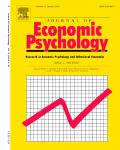
The new two-year journal Impact Factors have been released. Our journal’s 2020 impact factor has increased (again) and cracked the 2.0 mark. Specifically, we are up to 2.037, from 1.718 in 2019 and 1.561 in 2018. As a comparison, other journals publishing in behavioral economics are behind us (JEBO, 1.635; JBEE, 1.382), and we are also ahead of AEJ: Micro (1.872), Journal of Risk and Uncertainty (1.723), and Games and Economic Behavior (1.278). We are catching up to Experimental Economics (2.367), J&DM (2.543), and JBDM (2.438).
I gave the editor’s report in the 2021 IAREP conference. Here are some quick pointers. In 2020, we received 615 submissions, our desk rejection rate was 75%, and the overall rejection rate 91%. In the first-half of 2021 (until mid-June), we received 336 submissions, our desk-rejection rate was again 75%, and the overall rejection rate was 94%. The current average time to a desk decision (which includes “desk rejections” and “revise previous to review”) is slightly below 2 weeks, and the average time to first decision for papers which are not desk-rejected is below 12 weeks. Of those 12 weeks, often a large chunk is spent searching for reviewers since, as commented here, it’s becoming harder to secure reviewers.
The IAREP conference also saw the first edition of the Fred van Raaij Award, named in honor of our founding editor and given to the best paper published in the Journal of Economic Psychology in 2020. It went to Gender attitudes in the Arab region – The role of framing and priming effects, presented at the conference by Eleonora Nillesen. Congratulations!
